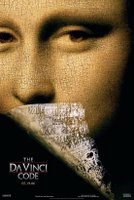 DaVinci Dialouge, a Web site to help Christians prepare for the questions raised by Dan Brown's The Da Vinci Code and upcoming movie, recently added a couple of new posts, both focusing on the book’s namesake.
DaVinci Dialouge, a Web site to help Christians prepare for the questions raised by Dan Brown's The Da Vinci Code and upcoming movie, recently added a couple of new posts, both focusing on the book’s namesake.Who is the Real Leonardo da Vinci? , written by Susanna Bede Caroselli (a Messiah College professor who’s worked the Frick Collection, Detroit Insitute of Arts and LA County Mueseum of Art and taught at Yale Divinity School), gives us a snapshot history and look at the man himself, including this tidbit on Brown's emphasis on Da Vinci's "disguised" handwriting: "reverse writing is not exactly a subtle code; it was probably a manifestation of left-handedness or, as has been more recently suggested, dyslexia." Good info for those involved in discussions about the book or film.
In Dan Brown’s Last Supper . . . and Leonardo’s, Lisa DeBoer (associate prof of art history at Westmont College, whose interests also include the relationship between early printed news and the writing of early modern history as well roles of visual arts in contemporary worship) discusses a several issues surrounding the book including Da Vinci’s painting and Brown’s writing strategy. One interesting tidbit is her observation that "Dan Brown’s strategy of listing a number of facts at the beginning of the book is one version of a longstanding literary tradition that goes back to the late seventeenth-century beginnings of the novel itself. Early works of fiction claimed legitimacy by mimicking forms of writing associated with truthfulness—early news reports, travel narratives, and personal letters." (Boy, did that bring back memories of my grad school days.) She also explores the differences between Dan Brown use of Da Vinci’s Last Supper and the actual painting and its history. Again, good info for those plan to use this film to take God-talk into the open spaces.